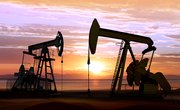
In 1892, the inventor Rudolf Diesel created a revolutionary new fuel product that today bears his name. His invention, as is typically the case in the physical sciences, was the culmination of years of hard, repetitive and financially unrewarding work.
Diesel was first inspired by a thermodynamics lecture at the Royal Bavarian Polytechnic of Munich, in his native Germany. (Thermodynamics is the study of the relationship between heat and the various other forms of energy.)
Diesel attained what he did in the determined pursuit a sort of physics "holy grail": a combustion engine that could convert all heat to useful work and would therefore be 100 percent mechanically efficient. This had been proven by physicists to the theoretically possible, but in practical terms it was, and even today remains elusive at best.
Despite Diesel falling far short of this efficiency ideal, his engines were still over twice as efficient as their predecessors – about 25 percent versus 10 percent. Unfortunately, he faced frequent calls for refunds on his products, and his life ended in poverty, reportedly by his own hand.
But Diesel's tailored new approach to igniting fuel and the invention of the diesel engine remain enormously important even in an age in which the perceptions of fossil fuels of all types have become enormously unpopular, even if their use continues largely unchecked.
Energy in the Modern World
"Energy" in physics is a central concept, yet a somewhat difficult one to explain adequately in everyday words. Energy has units of force multiplied by distance, but also "appears" in a variety of less-quantifiable guises. Primary energy sources include nuclear energy, fossil fuels (oil, coal and natural gas) and so-called renewable sources such as:
- **wind
- solar
- geothermal**
- hydroelectric power
An Interjection About Renewables
As of 2016, about 81.5 percent of the energy used in the United States (the world's biggest energy consumer among nations) was derived from fossil fuels. While this number was expected to drop to under 77 percent by the year 2040, the fact remains that the industrial world is not expected to wean itself off its oil, natural gas and coal dependence anytime in the foreseeable future.
This is despite unyielding, clear and at times very strident media and science-sector chatter about the potentially devastating environmental effects of climate change that are expected to arise in earnest in the second half of the present century.
While nuclear power, biomass, hydro power and other renewables have grown to contribute close to one-fourth of America's energy needs, only the "other renewables" category is expected to grow significantly in the decades to come.
Overview of Fossil Fuels
Most sources list three fossil fuels as being contributors to the global human energy machine: petroleum, natural gas and coal. (A fourth, a proprietary oil product called Orimulsion, came into use in the 1980s but became an effective non-player in the first decade of the 21st century.) Together, these accounted for four-fifths of the planet's energy supply as of 2019.
All controversies about the consequences of the use of fossil fuels aside, without them, we would live in a world unrecognizable to current Earth-travelers. The entire global transportation and communications grids rely on their supply of energy, and most of the world's critical manufactured commodities, such as plastics and steel, rely on fossil fuels absolutely at the moment.
"Fossil fuels" is a misnomer, because these fuels do not come from fossils, which are generally not even remnants of living things per se, but impressions of those long-dead things in rocks and soil. Fossil fuels do come from the decayed biomass of animals and plants that lived many millions of years ago, so fossil fuels and actual fossils are linked in that they both serve as indirect evidence of ancient life on Earth.
Types of Fossil Fuels
Diesel fuel is a kind of petroleum, a term used interchangeably in everyday discourse with "oil." The essential characteristics of the three major fossil fuels are as follows:
Petroleum. This fossil fuel consists mostly of the elements carbon and hydrogen, which is not surprising given both the abundance of these elements on Earth in general and their abundance in living things in particular. Most of it is believed to have been created between about 252 million and 66 million years ago, when a great deal of plant life was buried in the oceans of that unimaginably long-ago time.
Oil – or more accurately, the many different "oily" hydrocarbons that qualify as petroleum – is used to make a number of everyday products, including gasoline and heating oil in addition to diesel fuel.
At present, the burning of these fuels is responsible for over half of the carbon-rich "greenhouse gas" emissions in Earth's atmosphere, in turn believed to be a major contributor to the continual warming of the planet's surface and habitats that has been occurring for decades.
Oil accounted for about 35 percent of U.S energy produced as of 2016, a statistic expected to remain stable through at least 2040.
Natural Gas. This fossil fuel is notable for being colorless and odorless, qualities that stand in stark contrast to petroleum, a notably intrusive substance in these aspects. Like petroleum, it formed millions of years ago from the remains of plant and animal matter, through the chemical and mechanical (e.g., pressure) conditions that created them were obviously not identical to those giving rise to oil.
Natural-gas production has risen dramatically in the U.S. in the second decade of the 21st century, an effect almost entirely attributable to the rapid spread of the implementation of "fracking."
More properly called hydraulic fracturing, this controversial drilling technique requires a great deal of water and can cause seismic activity (similar to earthquakes) in affected regions. Natural gas contributed about a quarter of the U.S. energy supply in 2016, but is expected to match petroleum's 35-percent figure by 2040.
Coal. Once almost the sole source of fuel for generating electricity at power plants, coal is even older than the other fossil fuels, having started to form about 360 million years ago. Unlike the other fossil fuels, it has also been compressed into a characteristic form, although various subtypes exist and are classified according to carbon content.
Coal currently supplies about one-third of the world's energy supply. While it has fallen in terms of its share of the U.S. energy pie since about 2010, coal remains very popular in countries with historically lax environmental standards such as China.
Despite frequent proclamations to the contrary from the U.S. government as of 2019, the use of coal is expected to decline, not only thanks to an uptick in the use of renewables but owing to the aforementioned surge in natural gas extraction. Coal contributed about a 15 percent the U.S. energy supply in 2016, and its use is expected to continue to fall modestly before stabilizing at around 12 percent by 2040.
The Origins and History of Diesel Fuel
The arc of the life of Rudolf Diesel presents as something of a tragic account. Diesel was a university student in Germany in the early 1870s, at a time when large cities were beginning to become overwhelmed by the sheer amount of manure generated by the horses serving as the chief means of traveling long and short distances alike in these urban areas.
Diesel's years-long efforts to launch the combustion engine to new heights of efficiency were probably hampered by the burden of his own expectations, and those of a public that was aware of his aims. Despite making great efficiency gains (although far short of Diesel's aspirations, his engines were more than twice as efficient as the standard versions of the day).
In 1913, some 40 years after he first started his work, Diesel perished in an apparent but sometimes-disputed suicide during a boat voyage. Sadly, he never got to see his class of inventions really take off in the 1920s and 1930s.
The Diesel Engine
A diesel engine is an internal combustion engine, which means it converts chemical energy from the bonds in the fuel molecules to mechanical energy. A drive shaft is connected to a piston via a hinge on the outside of the shaft. The piston is inside a cylinder into which air, specially oxygen (required for combustion) and the fuel is pumped, or injected.
The controlled explosion inside the cylinder resulting from greatly increased pressure (and this temperature) forces the piston down, causing the shaft to rotate, driving the piston back upward as the shaft completes a full rotation and more fuel and air is pumped in. This cycle can occur up to many thousands of times per minute.
The "magic" of a diesel engine is that, unlike a regular combustion engine, it does not require any active fuel ignition. In a normal engine, the temperature within the cylinder does not quite get high enough for the fuel to ignite without electrical aid – hence "spark plugs," which render cars useless when they fail. In a diesel engine, the air is so strongly compressed that the fuel ignites unaided and less fuel is needed per engine stroke, greatly improving fuel efficiency.
The greater efficiency, or economy, of these engines makes them generally more expensive and difficult to maintain. In Diesel's own time, the technology to address these issues was simply not yet available.
Diesel Fuel Properties
The unique properties of a diesel engine result in its being able to use different kinds of oil, a fuel naturally called diesel fuel. This fuel is made from crude oil, and yields about 11 to 12 gallons of diesel fuel per 42-gallon barrel of unprocessed petroleum. It is used in most freight trucks, trains, buses and boats as well as farm vehicles and construction and military vehicles.
In 2006, the U.S. Environmental Protection Agency (EPA) mandated that the sulfur content of diesel fuels be greatly reduced, a measure that has proven extremely effective as it has been implemented over time. By 2018, about 97 percent of all diesel in use on America's roads and elsewhere consisted of a blend known as ultra-low sulfur diesel (ULSD).
- In 2018, diesel fuel accounted for about 20 percent of total U.S. petroleum use, or about 7 percent of American fuel consumption overall.
References
About the Author
Kevin Beck holds a bachelor's degree in physics with minors in math and chemistry from the University of Vermont. Formerly with ScienceBlogs.com and the editor of "Run Strong," he has written for Runner's World, Men's Fitness, Competitor, and a variety of other publications. More about Kevin and links to his professional work can be found at www.kemibe.com.
